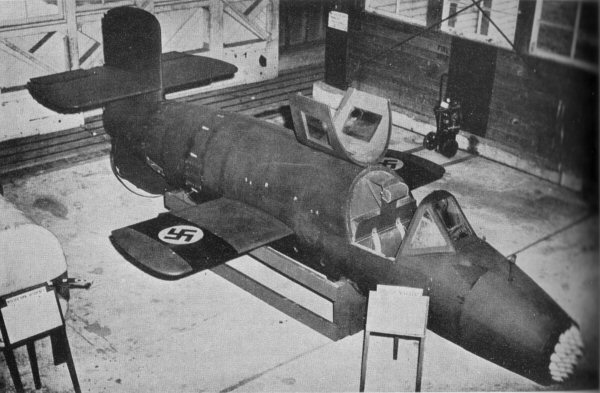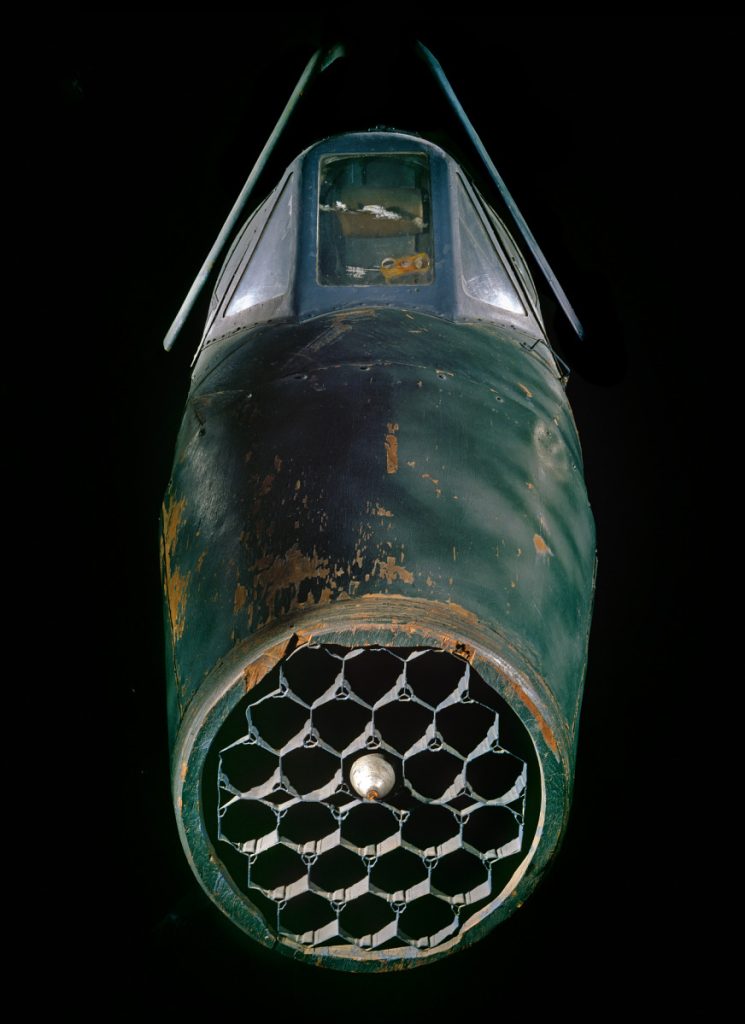
On March 1, 1945, the Bachem Ba 349 “Natter” took to the skies for the first time over Germany. Designed by Erich Bachem as a last-ditch point-defense interceptor, the Ba 349 was a radical departure from conventional fighter aircraft. With Germany struggling to counter relentless Allied daylight bombing raids and facing severe shortages of both aircraft and trained pilots, the Luftwaffe explored alternative solutions. Among these was the concept of a manned, rocket-powered interceptor capable of quickly reaching enemy bomber formations and delivering a devastating attack before the pilot ejected to safety.

The “Natter” was designed for vertical launch from a ground-based pad, guided initially by an autopilot system similar to that used in the V-2 rocket. Once in proximity to enemy bombers, the pilot would assume control, line up for an attack, and fire a battery of 28 55mm R4M rockets. The Ba 349’s single-use Walter HWK 109-509C-1 bi-fuel rocket engine provided just enough thrust to reach altitude before the aircraft entered a steep dive. The pilot had only one opportunity to fire at his target before bailing out, at which point the aircraft’s nose and fuselage were designed to break away, allowing for a rapid escape.

Constructed primarily of wood and assembled using simple materials such as nails and glue, the Ba 349 was intended to be an inexpensive, easy-to-produce weapon. It was powered by a combination of one liquid-fuel rocket engine and four Schmidding SG 34 solid-fuel booster rockets. Though it never managed to achieve anything like full operation, projected performances gave it a theoretical blistering climb rate of 37,000 feet per minute. Thus, in theory capable of reaching its target in just over a minute, the “Natter” had a projected top speed of 620 mph and a proposed operational range of 25–37 miles, depending on altitude.

A total of 36 Ba 349s were built, though the aircraft never saw combat. Today, only two examples survive. The most complete resides at the Smithsonian National Air and Space Museum’s Paul E. Garber Preservation, Restoration, and Storage Facility. Captured by U.S. troops in Austria in May 1945, this airframe remains in storage and will require extensive preservation work before any potential public display. The only intact “Natter” launch pad still stands in Hasenholz, Germany, with remnants of others nearby. Although the Ba 349 never entered operational service, it remains a striking example of the extreme measures taken in wartime desperation. Its innovative, yet impractical, design reflects both the ingenuity and urgency of Germany’s final efforts to defend its skies.

























